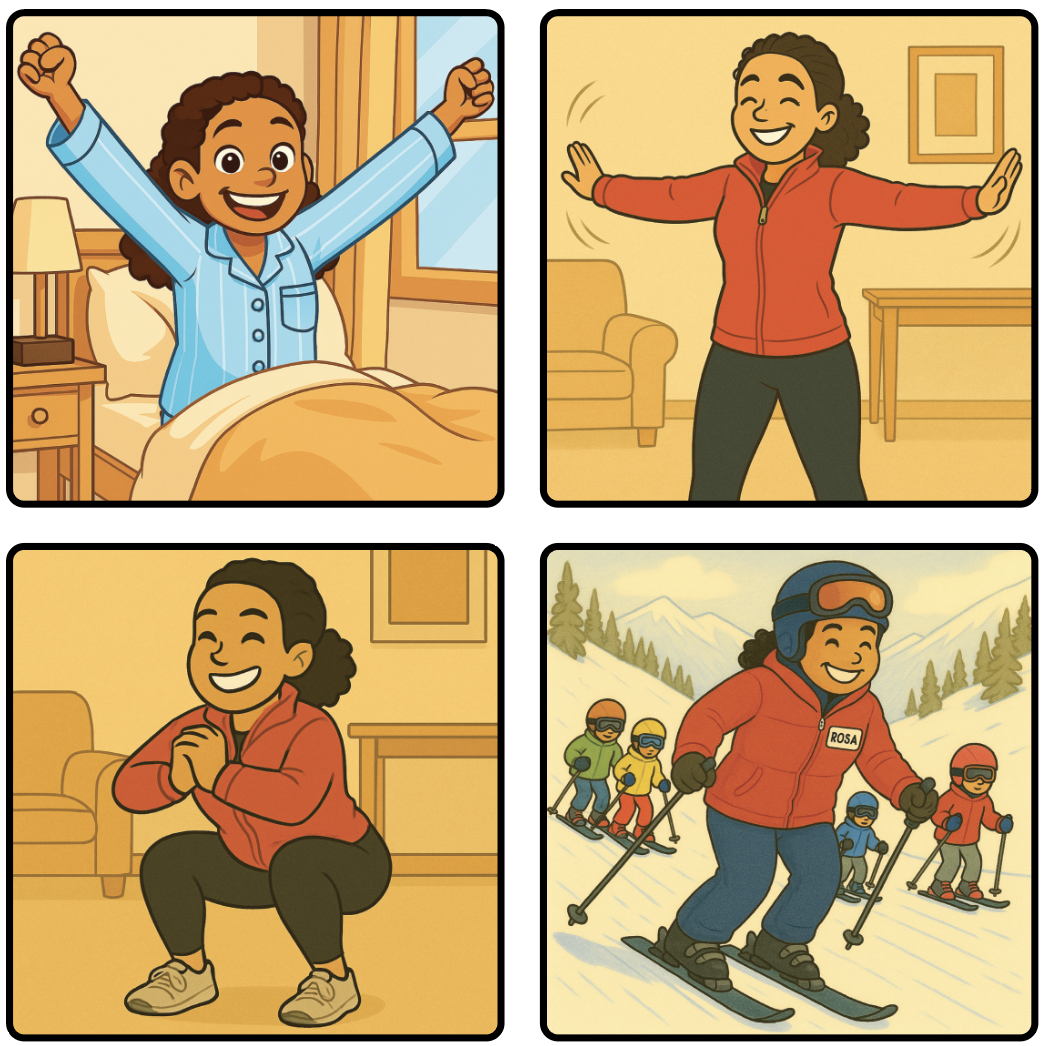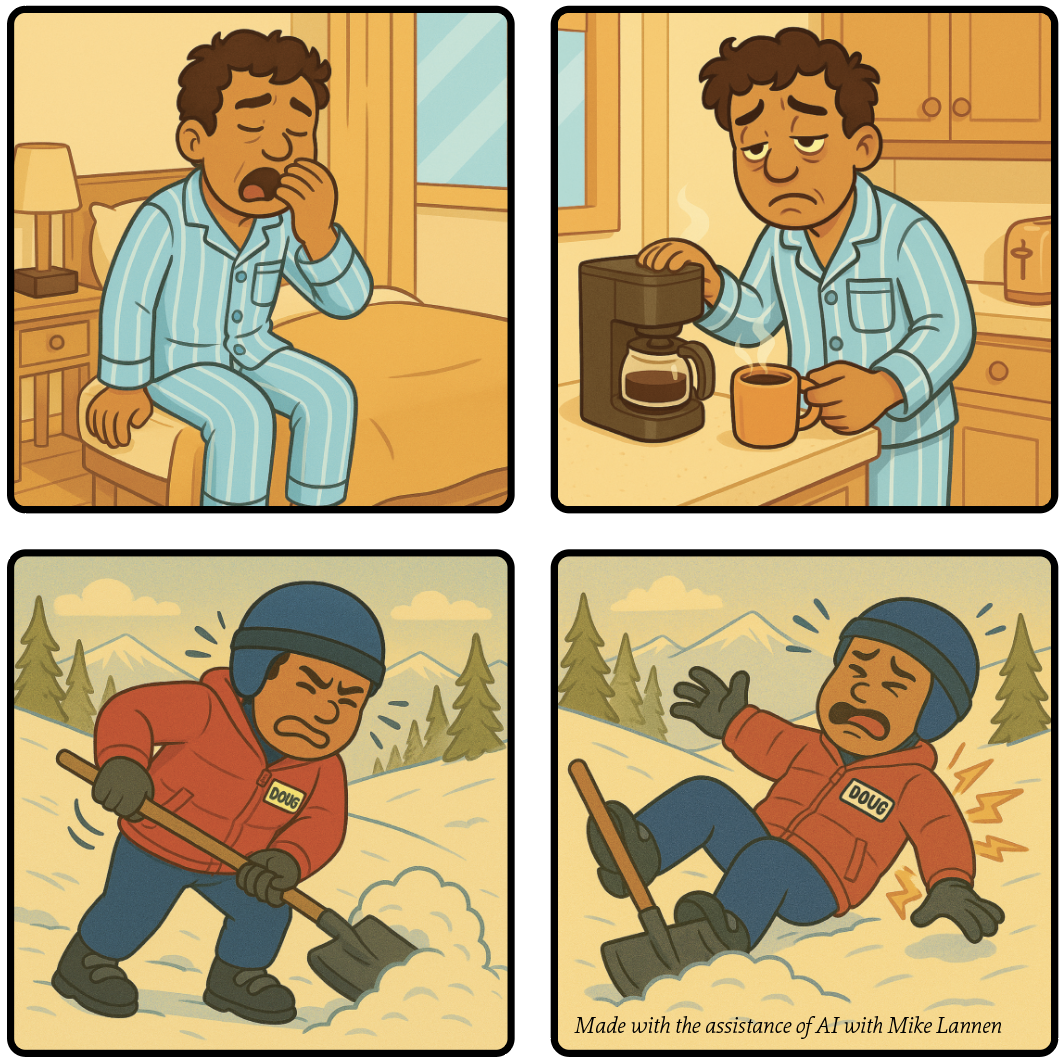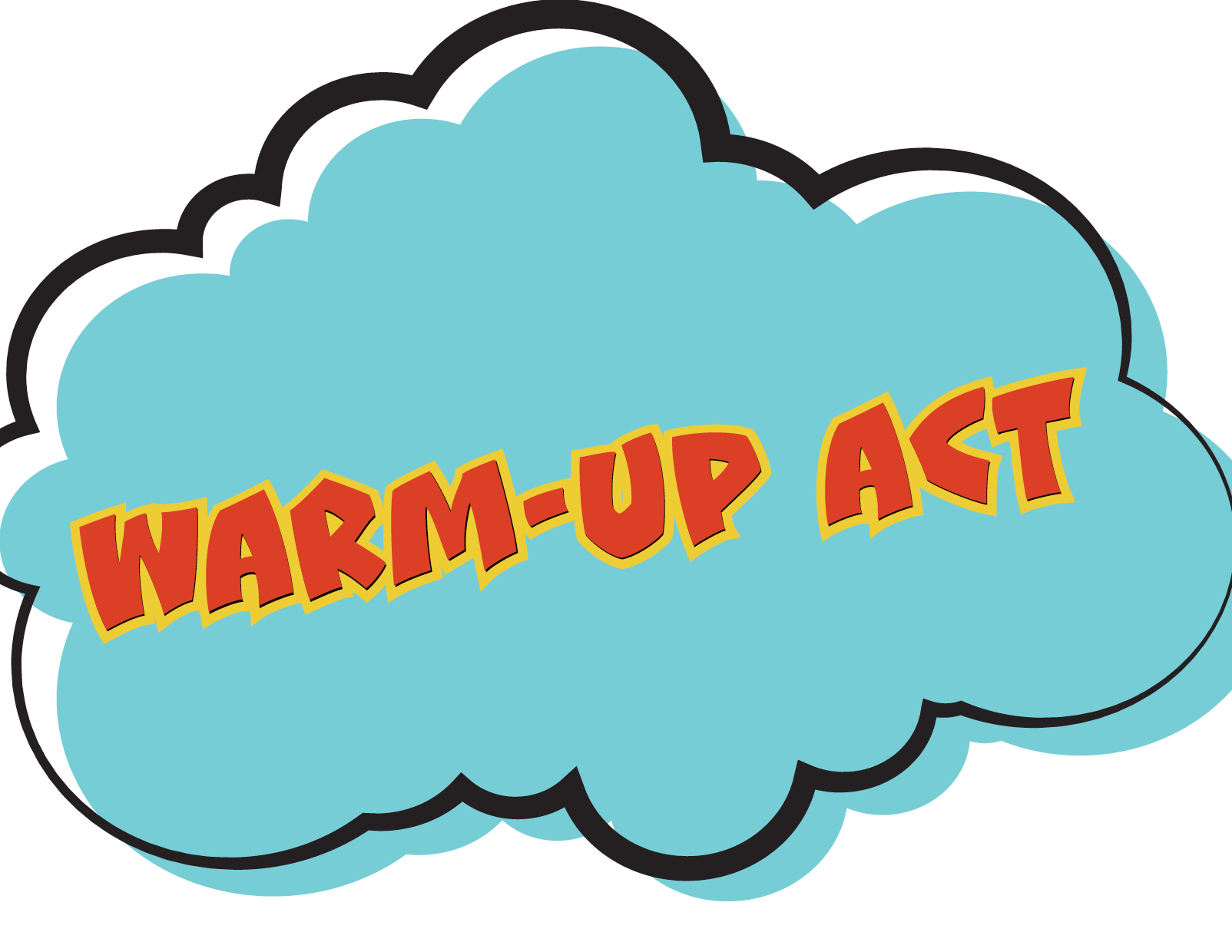Why has it become the cultural norm in the snowsports industry to neglect warming up before a physically demanding workday?
Most snow professionals know they should “warm up” before shoveling, skiing, lifting, and working on the hill. It only takes five to 10 minutes each morning to do so, yet most still skip it. Well, don’t! Whether your reason is “not enough time” or “I’ll loosen up as I go,” going from zero to full throttle without properly preparing your body increases your risk of injury, reduces physical performance, and accelerates wear-and-tear that can cut careers short.
You’d never see an elite athlete in any sport enter competition without properly preparing first. A baseball pitcher would never step onto the mound in the first inning without a total body neuromuscular warm-up. A gymnast would never perform a floor routine without a complete warm-up to optimize movement, flexibility, and stability.
This doesn’t just apply to elite athletes. A simple neuromuscular warm-up—a basic five-minute sequence is outlined in this article—is one of the fastest and most effective ways to prepare for working or sliding on snow, so you feel, move, and recover better, both today and long-term.
Why We Wake Up Feeling Stiff
When you sleep, the body relaxes and transitions into recovery mode. Heart rate and circulation slow down as the nervous system downshifts into a parasympathetic state. The spine decompresses, allowing intervertebral discs to absorb fluid, like a sponge sitting in water.
This phase is great for healing and tissue repair, but it comes with a cost—decreased blood flow to muscles and reduced joint mobility. This results in stiffer, less elastic tissues that can get injured easily if loaded too abruptly.
Add freezing cold temperatures, plus a mind that’s still waking up, and a serious injury could be just a slip away.
 Ski instructor Rosa does a quick warm-up before going to work and feels great. Do what Rosa does.
Ski instructor Rosa does a quick warm-up before going to work and feels great. Do what Rosa does.
What Warming up Actually Does
A neuromuscular warm-up, which could include simple exercises like high knees, arm circles, balancing on one foot, lunges, and core activation drills, involves a series of functional movements that prepare your entire body for load, impact, and operating on the snow. It does more than just “make you feel less cold.” A good warm-up activates muscles and wakes up nerves, literally changing how your muscles, joints, and nervous system function, and affects whether your body will wear out sooner or later. Here’s what actually happens inside your body when you warm up:
Heart rate increases. Active movement increases heart rate. This improves circulation, oxygen delivery to muscles, and raises tissue temperature. That last point is key: Warmer muscles and tendons are more pliable, more flexible, and more tolerant of load.
Muscles activate. Large muscle groups are easily activated with general movement, but small and/or weaker muscles tend to remain inactive until they are specifically targeted with an activation drill. Smaller muscles are important for keeping joints stable and the body in safe alignment. When these muscles are under-utilized, movement patterns become altered, compensations may occur, and muscle imbalance gradually worsens. This leads to a higher risk of acute and chronic injury. A simple warm-up routine will activate large and small muscle groups needed to keep your body balanced, supported, and strong on uneven, mountainous terrain.
Joints become more mobile. Guiding and stretching joints through full range of motion not only helps you feel looser but helps maintain cartilage health and joint stability. Joint movement stimulates production of synovial fluid, which cushions the joints and delivers nutrients to cartilage. This slows degenerative changes, relieves pain, and enhances the capacity of the joint to tolerate load.
Priming of the nervous system. Sensory information is constantly flooding into your brain through nerves. The central nervous system quickly processes the information, decides what is important and what action to take, and then sends signals out through nerves, telling specific muscles to contract. This neuromuscular and neurocognitive communication happens very quickly, and a delay of milliseconds can be the difference between a torn ACL—or not.
Simple warm-up exercises to prime the nervous system will enhance communication between the brain and body. This facilitates faster and more accurate responses, better coordination, improved balance, and quicker decision-making. As a result, performance output immediately improves, reaction time shrinks, and risk of injury is reduced.
Whether you are patrolling, instructing, shoveling, walking across snow or ice, or having a recreational ski day, your body must be prepared to react quickly with coordinated movements in unpredictable conditions—from guests maneuvering around you to changing snow conditions and emergencies that require fast action.
 Liftie Doug doesn’t warm-up before going to work and hurts his back shoveling. Don’t do what Doug does.
Liftie Doug doesn’t warm-up before going to work and hurts his back shoveling. Don’t do what Doug does.
Excuses, Excuses (And Why to Avoid Them)
Of course, there are many excuses for avoiding a proper warm-up. There are just as many explanations for why you should reject them. A few examples:
“I’ll just take an easy green or blue run as a warm-up.”
While your first run may get your heart rate up and increase circulation, it will not activate the smaller stabilizing muscles needed to support your body and movements. You will not open your full range of motion to handle an unexpected fall or extreme reach. Quick reactions will take longer on the first few runs. All of this will leave you more vulnerable to injury during your day on the hill.
“I don’t have any pain, so I don’t need to warm up.”
Small imbalances accumulate over time. Movement patterns degrade. Joints wear unevenly. A small tweak can become chronic pain; an awkward landing may result in a torn ACL. Don’t wait until you start feeling pain to take warm-ups seriously. Five minutes now beats five months of rehab later.
“Warm-ups are just for older people. I’ve never warmed up before, and I’ve always been fine.”
Age-related changes increase the risk of injury. After about 25 years, age-related changes start setting in, and after 40 years, the decline becomes more rapid and noticeable. These changes include everything from loss of muscle mass and flexibility to slower nerve conduction and impaired balance. A regular exercise program and a daily warm-up routine should be non-negotiables for staying active and injury-free with age.
While ACL injuries and muscle strains can happen at any age, most people are surprised to learn that ages 30-40 are the prime range for rupturing tendons, often with no warning signs at all. This applies to Achilles tendon, patellar tendon, and rotator cuff tendon tears—all of which become far more common after age 30. And all require a long recovery time. Most require surgery.
Osteoarthritis and degenerative meniscus tears are not just an issue for the elderly. These conditions can start to develop at any age, as early as your 20s and 30s, but are most common during middle age, and may lead to an eventual joint replacement.
So a simple warm-up routine can prove very valuable. While a more extensive warm-up routine may be necessary as you get older, you’re never too young to benefit from even five minutes of dedicated movement to prepare for activity.
A Simple Warm-Up Sequence
An effective neuromuscular warm-up doesn’t require a lot of time, space, or equipment. You can do this simple five-minute sequence just about anywhere—at home, in the locker room, or out on the snow. Feel free to modify and expand to fit your needs and goals.
- Bodyweight mini squats
- Side-to-side lunging stretch
- Reverse lunges with trunk rotations
- Hip circles or leg swings
- Ankle pumps or circles
- Arm circles, shoulder stretches, and neck stretches
- Single leg balance
- Hip activation with resistance band and gentle plyometrics (if tolerated)
If you don’t have five or 10 minutes, you can break this into “movement snacks” throughout your shift, so your body remains ready for action even during periods of inactivity.
Take Care of Yourself
Your body is your most valuable asset. It could make or break your career in snowsports and your future lifestyle.
Make it a priority to start each day with a neuromuscular warm-up routine that increases heart rate, activates stabilizing muscles, gradually loads tendons, stretches joints through full range of motion, primes the nervous system, and mimics movements in your sport or activity.
All it takes is a few minutes of intentional movement will better prepare you to handle everything the mountain may throw your way.






